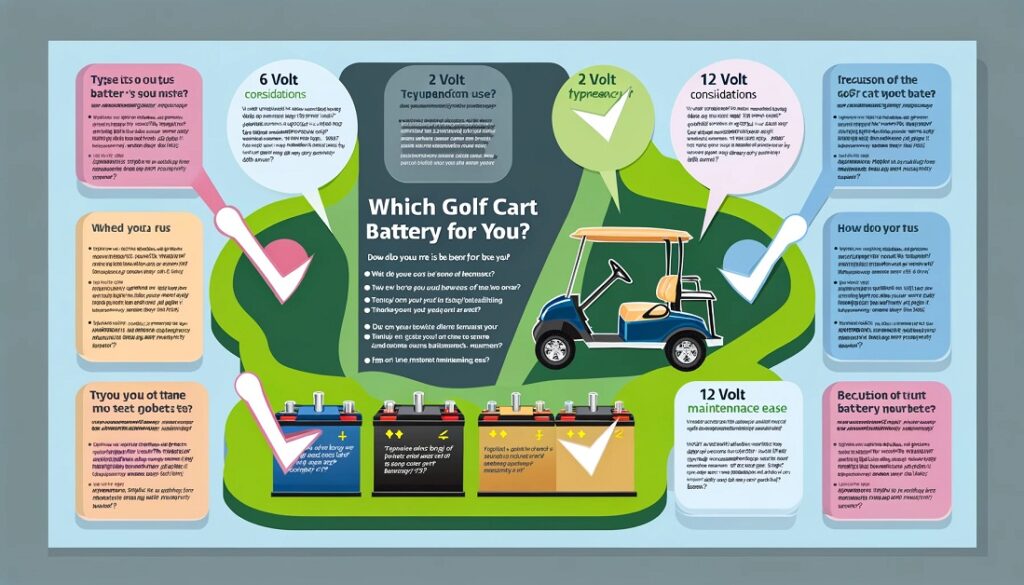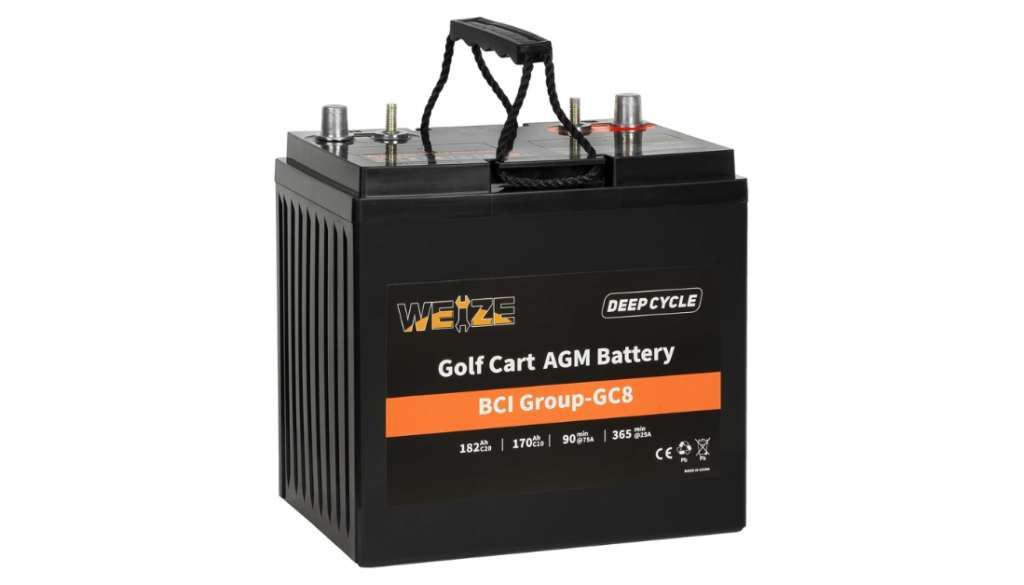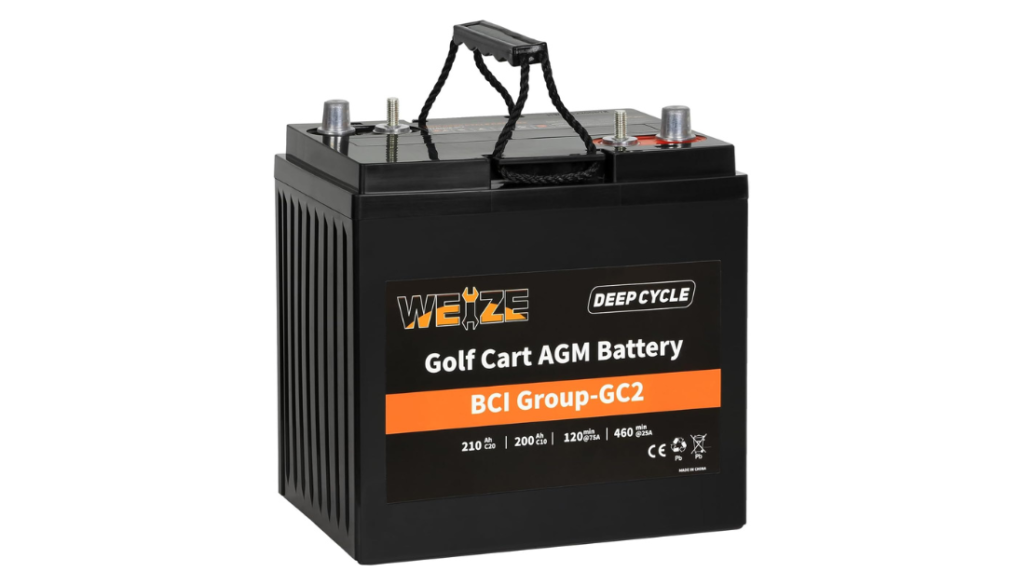Navigating the minefield of power solutions for my critical equipment, I’ve frequently found myself at a crossroads, torn between the appeal of 6 volt vs 8 volt batteries. This seemingly simple choice conceals a significant quandary for both fans and experts since each approach provides a unique set of benefits and sacrifices. On the one hand, 6-volt batteries, which are known for their dependability and widespread compatibility, have formed the foundation of my projects ranging from vintage car repair to emergency lighting systems. The 8-volt variations, on the other hand, entice me with the promise of longer runtimes and improved performance, with the potential to revolutionize how I power my equipment.
However, this decision is more than just choosing a battery; it is about knowing the complicated dance of efficiency, lifespan, and power requirements unique to my pursuits. With the market flooded with options and the stakes as high as the success of my favorite projects, delving into the subtle world of various power sources is not only necessary but also imperative. As I peel back the layers, I’m met with a mix of technological wonders and confusing numbers, each presenting a story of voltage and vitality.
Table of Contents
Toggle8 Volt Golf Cart Batteries
As we delve further into the heart of power storage technologies, 8-volt golf cart batteries emerge as specialist soldiers on the battlefield of portable energy. These batteries, designed expressly for the needs of golf carts, strike a delicate balance between long-lasting dependability and the powerful power required to handle a golf course’s varied terrains. The beauty of an 8-volt system lies in its painstaking design, which is optimized not only for golf carts but also for a wide range of applications that require a consistent and stable power source over long periods of time.
Battery Performance and Maintenance
Extending the life and efficiency of 8-volt golf cart batteries requires both performance and maintenance. These power units are designed for deep discharge and recharge cycles, which is an important characteristic for applications that require extended periods of operation followed by recharging. Proper maintenance, such as monitoring water levels regularly (for lead-acid batteries), ensuring clean connections, and following a disciplined charging schedule, has a substantial impact on their longevity and performance.
Statistically, well-maintained 8v batteries can outlast their estimated lifespan, providing years of dependable operation. It demonstrates the principle that the care taken with these batteries correlates directly with their operational efficiency and durability.
Battery Capacity and Voltage
Going further detail, the capacity of an 8-volt battery is critical to its overall function. Capacity, measured in ampere-hours (Ah), determines how long a battery can produce power before requiring a recharge. In comparison to their 6-volt counterparts, 8-volt batteries frequently strike a balance between size and capacity, resulting in a compact yet robust energy solution. This balance is critical in situations where space and weight are at a premium while a significant power reserve is required. For example, in golf carts, the slightly higher voltage of 8-volt batteries results in fewer units needed to provide the desired power output, optimizing space and weight distribution throughout the vehicle.
Deep Cycle Design
The deep cycle design of 8-volt batteries distinguishes them from conventional automobile batteries. Unlike automobile batteries, which offer a rapid burst of power (perfect for starting engines), deep-cycle batteries are designed to provide a consistent level of power over time. This design is distinguished by thicker lead plates and a unique chemical composition that allows for repeated deep discharging and recharging with minimal deterioration. The deep cycle nature allows these batteries to maintain performance over numerous cycles, making them a perfect choice for golf carts, solar energy storage, and other applications that require prolonged power delivery.
6 Volt Golf Cart Batteries
When it comes to electric golf carts, the batteries that power them play an important role in their performance and durability. Among the different options available, 6v golf cart batteries are a popular choice due to their dependability and effectiveness in providing power over long periods of time. This section will look at the subtleties of 6-volt batteries, including their performance and maintenance, capacity and voltage, and deep cycle design.
Battery Performance and Maintenance
The performance of 6-volt golf cart batteries is heavily dependent on their upkeep. These batteries are intended to provide a consistent source of power, but their longevity and efficiency are heavily determined by how they are cared for. Regular maintenance includes checking the electrolyte levels, ensuring the terminals are clean and corrosion-free, and keeping the battery charged to the optimum level. With proper maintenance, these batteries can last for up to 5-7 years. However, negligence can significantly shorten this lifespan and impair the golf cart’s function.
Battery Capacity and Voltage
Capacity and voltage are two essential criteria that determine the performance of 6-volt golf cart batteries. A 6-volt battery’s capacity typically ranges between 200 and 225 ampere-hours (Ah). This capacity refers to how much electricity the battery can store and provide over time, ultimately determining how long the golf cart can run before needing to be recharged. The 6-volt name refers to the electrical potential it can generate, which, when used in series (by connecting numerous batteries), may efficiently power a golf cart’s engine by providing the necessary voltage and ampere-hour capacity for optimal performance.
Deep Cycle Design
Six-volt golf cart batteries are distinguished by their deep cycle architecture. Unlike ordinary automobile batteries, which are built for brief, high-power bursts to start an engine, deep-cycle batteries are meant to produce a consistent level of power over time. This architecture allows them to be drained and recharged numerous times during their lifetime, a process known as cycling. The deep cycle architecture is ideal for applications such as golf carts, where the power consumption is consistent and extended, ensuring that the vehicle runs efficiently during a golf game or a day’s operation. 6-volt deep cycle batteries are a stable power source for electric golf carts since they can sustain several deep discharge and recharge cycles without noticeable degradation.
Advantages and Disadvantages Of Using 6 Volt vs 8 Volt Batteries

When weighing the pros and cons of 6 volt and 8-volt batteries, particularly in the context of golf carts and other electric vehicles, it is critical to consider both the benefits and drawbacks of these batteries. This balanced perspective enables users to make informed decisions based on their requirements, whether they are related to performance, maintenance, cost-effectiveness, or any other metric. The differences between 6 and 8-volt batteries can affect the overall efficiency, runtime, and even longevity of the electric cars they power.
Advantages
There are various advantages to using 6-volt batteries over 8-volt batteries, which can have a substantial impact on consumer and business decision-making processes. The advantages range from money savings to operational improvements. Let’s look into these benefits more specifically:
Lower Cost
One of the most convincing reasons to choose 6-volt batteries over 8-volt batteries is the cheaper initial cost. This cost-effectiveness is especially tempting to individuals who manage a fleet of golf carts or other electric vehicles, as the savings can be significant when purchasing many units. The lower cost does not imply worse quality or performance; it just reflects the economic manufacture and market availability of these batteries.
Lighter Weight
6-volt batteries are often lighter than 8-volt batteries, which has several practical advantages. A lighter battery results in a lighter overall vehicle weight, which can contribute to increased efficiency and less wear on the vehicle’s components over time. This is especially relevant in applications where weight is critical to performance, such as golf carts, where the terrain varies greatly and every pound counts for maximizing battery life and speed.
Wide Availability
Because of their long history and popularity, 6-volt batteries are widely accessible on the market. This availability implies that replacements are easy to find, and there is a diverse range of brands and models to pick from. For customers, this implies more competitive pricing and the flexibility to swiftly acquire replacements or upgrades with minimal downtime. The widespread usage of 6-volt batteries also results in a stronger recycling and disposal infrastructure, which is critical for environmental sustainability.
Disadvantages
While 6-volt batteries provide many advantages, it is also crucial to evaluate their disadvantages, particularly when compared to 8 volt choices. These downsides might have a long-term impact on operational efficiency, maintenance requirements, and overall costs. Understanding these disadvantages allows you to make a well-rounded selection adapted to your individual needs and scenarios, ensuring that the choice between 6 volt and 8 volt batteries fits with the required balance of performance, longevity, and price.
Higher Risk Of Failure
One significant downside of 6-volt batteries, particularly when used in series to produce the higher voltages required for some applications, is an increased risk of failure. This risk arises from the fact that if one of the batteries in the series fails, the system’s performance may suffer or even be disabled entirely. Because more 6-volt batteries are usually required to match the power output of fewer 8-volt batteries, the likelihood of meeting a malfunctioning device rises, potentially leading to more frequent maintenance concerns and replacements.
More Batteries Are Required
To attain the same voltage and power output as 8-volt batteries, users frequently need to connect multiple 6-volt batteries in series. This requirement not only increases the initial cost in terms of several batteries but also complicates the installation and wiring procedures. The space required to accommodate extra batteries might be a significant hindrance in applications where physical dimensions are limited. Furthermore, the complexity of handling extra batteries in terms of maintenance and monitoring might exacerbate operational difficulties.
More Frequent Charging
Due to intrinsic design and capacity restrictions, 6-volt batteries may require more frequent charging cycles to meet the same operational demands as their 8-volt equivalents. This can result in greater downtime for cars or systems powered by these batteries, as they spend more time charging than in use. The requirement for more frequent charging might also result in greater electricity bills and may necessitate more careful management to guarantee that the batteries are always ready for use when needed.
Comparison Between 6 Volt vs 8 Volt Golf Cart Batteries
When comparing 6 volt versus 8 volt golf cart batteries, it boils down to balance. 6 volt batteries are cost-effective, lighter, and widely available, ideal for extended use with more frequent maintenance. In contrast, 8 volt batteries offer simplicity and less maintenance, with fewer units needed for the same power, making them suitable for those prioritizing ease of use and reduced charging times.
| Feature | 6 Volt Batteries | 8 Volt Batteries |
|---|---|---|
| Voltage | 6 Volts | 8 Volts |
| Number of Batteries (for 48v system) | 8 | 6 |
| Initial Cost | Higher | Lower |
| Installation Complexity | More Complex | Simpler |
| Potential Runtime | Higher (potentially) | Lower |
| Potential Lifespan | Longer (potentially) | Shorter (potentially) |
| Depth of Discharge (DOD) Impact | Depth of Discharge (DOD) Impact | Lower DOD for same runtime extends lifespan |
| Maintenance Requirements | Similar (regular cleaning and watering) | Similar (regular cleaning and watering) |
| Weight per Battery | Lighter | Heavier |
| Availability | Widely available | May be less available (depending on region) |
This is some basic compress between them now hope so this is useful for your selection your decision will shape the efficiency and operation of your golf cart.
Which Battery Is Best for You?

Choosing between 6 and 8-volt batteries for your application necessitates a thorough examination of your requirements, preferences, and operating conditions. Whether you’re managing a fleet of golf carts, installing a solar power system, or working on any other application that requires these types of batteries, selecting the correct selection is crucial for achieving peak performance and cost-efficiency. This section seeks to assist how in choosing the optimal battery type for your needs.
Consider Your Application’s Power Requirements: Before making a decision, you should understand your application’s power requirements. 6-volt batteries may be desirable in systems designed to accommodate many batteries and achieve a larger cumulative capacity at a lower cost. In contrast, 8-volt batteries can produce a higher voltage from fewer units, simplifying system design and lowering wiring and maintenance complexity.
Evaluate Space and Weight Restrictions: Space and weight are important restrictions in many applications. If your system has limited space or reducing weight is a priority—for example, in mobility applications such as golf carts—the lighter and potentially smaller design of 6-volt batteries may be preferable. Conversely, if space is available, using fewer 8-volt batteries to generate the same power output may be preferred, especially if it simplifies the setup.
Examine Maintenance and Lifecycle Expenses: Maintenance and lifecycle expenses are important long-term considerations. While 6-volt batteries may be less expensive in the beginning, the requirement for more frequent replacements or several units may result in greater expenditures over time. The possibility of more frequent charging and maintenance using 6-volt batteries should also be considered in the decision-making process.
Understand Your Charging Infrastructure: The availability and capacity of your charging infrastructure can influence your decision between 6 and 8-volt batteries. Systems designed to charge larger batteries may be more efficient with 8-volt options, but those with smaller, more numerous batteries may prefer 6-volt options.
Future-Proofing: Consider your system’s scalability and prospective updates. If you plan to increase power or capacity, you must first understand how each battery type can support these changes. Because of their higher voltage per unit, 8-volt batteries may provide a more straightforward upgrade path in certain systems
Final Thought

Okay, let’s wrap up straightforwardly. When deciding between 6 and 8 volt batteries, consider what you need. It’s like selecting between two good pairs of shoes—one may be ideal for marathon running and the other for casual walks. If you need something cheap and light, and you have the space for it, then 6-volt batteries can be your best option. They’re ideal for those on a tight budget or who require something simple to find and replace.
On the other hand, if you want to keep things simple, don’t want to deal with too many batteries, and dislike the concept of constantly charging them, you can prefer 8-volt batteries. They may be more expensive up front, but if they match your system better and save you time in the long term, they may be worth the investment.
Think about what will make your life easier. Are you trying to squeeze batteries into a small space or reduce their weight? Perhaps you want to make upkeep as simple as possible. Whatever your circumstance, the decision between 6 and 8-volt batteries comes down to your requirements, how much you’re ready to spend now and in the future, and how much effort you’re willing to put into maintenance.
Finally, there is no single solution that works for everyone. Just like choosing shoes, it’s all about what works best for your lifestyle (or, in this case, your equipment). Choose what meets your needs, and you’ll be OK.




